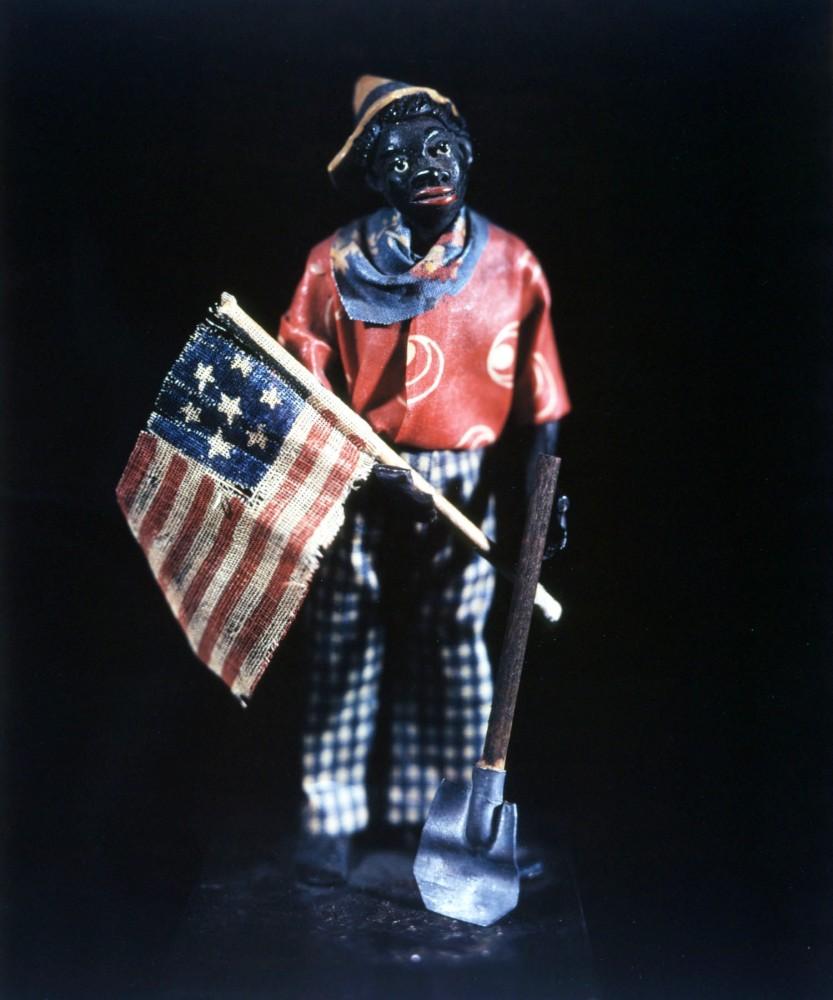Jim Crow Museum receives polaroids worth $2M

GVL / Courtesy – David Levinthal
Feb 19, 2018
Ferris State University is home to the Jim Crow Museum, a spot known throughout the country and the world for its large collection of racist memorabilia of African-Americans in the U.S. In December 2017, the museum received an anonymous donation of photographer David Levinthal’s original polaroids, with an estimated value of $2 million.
David Pilgrim, vice president for diversity and inclusion at FSU, founded the museum in the mid-90s with his personal collection of racist memorabilia, which he estimated was around 3,500 objects at the time. He continued to purchase objects for the museum with his own money until he convinced the university to fund his project. Eventually, he had collected enough objects to open a larger space for the museum, with the current location being open since 2012.
The most notable aspect of the anonymous donation, Pilgrim said, is that the majority of the photos are the only polaroids of Levinthal’s existing in the world, with the others being one of five in the world.
“Over 30 of them were one of one, meaning that they’re the only one existing,” Pilgrim said. “Then, I think another 28 of them were artist proofs, which are generally never seen by anyone. Right there you have about 60 which are the only ones to exist in the entire world. Then, the rest of them are one of five. The main thing to note here is that we’re very fortunate to have received some very original pieces, and a lot of them are the only one that was created.”
Levinthal has published many photography series that have garnered public attention, such as “Bad Barbie” and “Blackface,” and Pilgrim said he first encountered Levinthal’s photography in a coffee table book. Pilgrim remembers being drawn to the photography of Levinthal’s “Blackface” series, noting that many of the objects he photographed could be found in the Jim Crow Museum.
“I had seen coffee table books about certain series that he had,” Pilgrim said. “I was aware of that, and the reason, quite frankly, is because the images that he photographed were images of (objects that we owned). He didn’t use our objects, but when he would photograph a bank with the unfortunate name of ‘Jolly N***** Bank,’ well, we have 20 of those. Whatever it was he was photographing, they were things one might expect to find—or, indeed, would find—in the museum.”
Most of the polaroids donated were from “Blackface,” though the museum also received polaroids from a couple of Levinthal’s other collections, “Barbie” and “Mein Kampf.” Pilgrim hopes to open a sexism museum on FSU’s campus one day, so polaroids from the “Barbie” collection are a nice addition to his already-growing collection.
“My hope is one day to build a sexism museum,” Pilgrim said. “These are just tough days to build stuff, but it is my goal, and I’ve collected probably a couple thousand pieces (already). I was talking to the representatives of the donor, and I started telling them about the sexism collection, so we ended up getting nine of the Barbie (polaroids).”
The museum receives donations on a weekly basis, with the donations last year amounting to around 600 objects, Pilgrim said. Due to the amount of donations that the museum receives, many of them are repeats, so the polaroid donation was a way to bring in new material. While the museum has a lot of repeated objects, Pilgrim noted that it only furthers the museum’s message.
“One of the messages of the museum is that these objects were everywhere, so for us to show 10 of something just makes the point,” he said. “It doesn’t hurt our point; it enhances our point. We have the objects we need to tell the stories that we want to tell.”
Currently, Pilgrim is considering strategies for handling the original polaroids, being delicate objects, while really honing in the content of the photos. He is working with the Urban Institute for Contemporary Arts (UICA) in Grand Rapids to potentially bring the polaroids to their museum for a couple of months, though plans have not been solidified yet.
“For me, the real value is what we can do with them (the polaroids),” Pilgrim said. “Part of this is trying to figure out strategies for handling the material, but also for maximizing it. We get thousands of people every year coming to the museum. … I am hoping that when we do the opening at the UICA that a lot of people come to that.”
The Jim Crow Museum is open Monday through Friday from noon to 5 p.m. and every other Saturday from noon to 5 p.m.

























